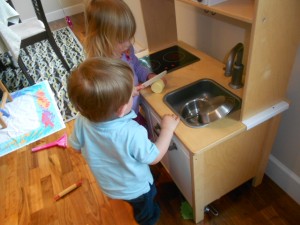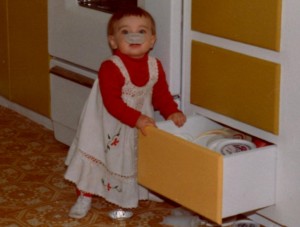The kitchen floor doesn’t need to be covered with toys, instead it can be covered with containers, pans, and tools when we let kids have a kitchen drawer. At least, when it comes from the drawer it’s easier to scoop up and drop back in when it’s time to tidy up.
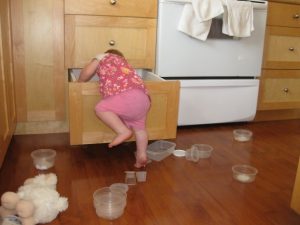
A low kitchen drawer filled with a few items can be a source of play for kids of various ages. Young ones will enjoy simply taking out all the stuff and spreading it around. Kids a little older will use the objects to pretend or, perhaps, to build. The kind of play reflects their development. Because the objects can be used in several ways, they will meet children’s needs at various levels.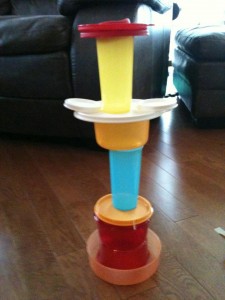
Some possible items to include in a bottom drawer include plastic containers of different sizes, colors, and shapes, small metal pots and pans, a few tools such as a potato masher, ice cream scoop, wooden spoon, and spatula, and plastic dishes, cups, spoons, and forks.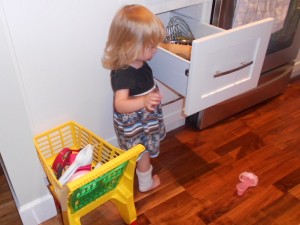
Toys can often only be used in one way. With kitchen items, there’s no right or wrong way. Kids can play with them according to their interests and development. Little Sister loves to pretend she is shopping with stuff in the drawer. Big Sister liked to set up her own restaurant and serve us.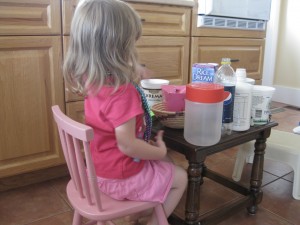
Children like using things that are not toys. Toys are what kids have, while kitchen objects are what adults get to use. Children imitate the actions of the adults around them during their play. Adults spend time in the kitchen, so understandably kids like to do that too. During kids’ self-directed play in the kitchen, we can occasionally interact with them. We might ask if they are making something to eat, or comment that a spoon banging on a lid makes a noise. Is it a loud noise or a soft noise? Messes are not always something we see, they can be something we hear too.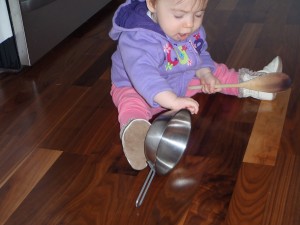
We often forget that play doesn’t come from toys, it comes from within children themselves. For some messy play fun and learning, would this work in your house or play center to let kids have a kitchen drawer?

